B2B case studies are incredible conversion assets. They help marketers provide insights about the capability of their product and serve as sales enablement content for salespeople to close deals.
Mariah Parker, Head of Growth at Trustworthy:
In a previous role, I increased our sales call conversion rate to 50% by providing case studies for our sales team. The case studies help buyers to set expectations and see how companies like theirs had performed on our platform.
Beyond Mariah, many marketing teams are winning customers with B2B case studies and years of Content Marketing Institute research proves it.
In 2018, 40% of B2B marketers said customer case studies were the most effective asset for turning potential clients into buyers.
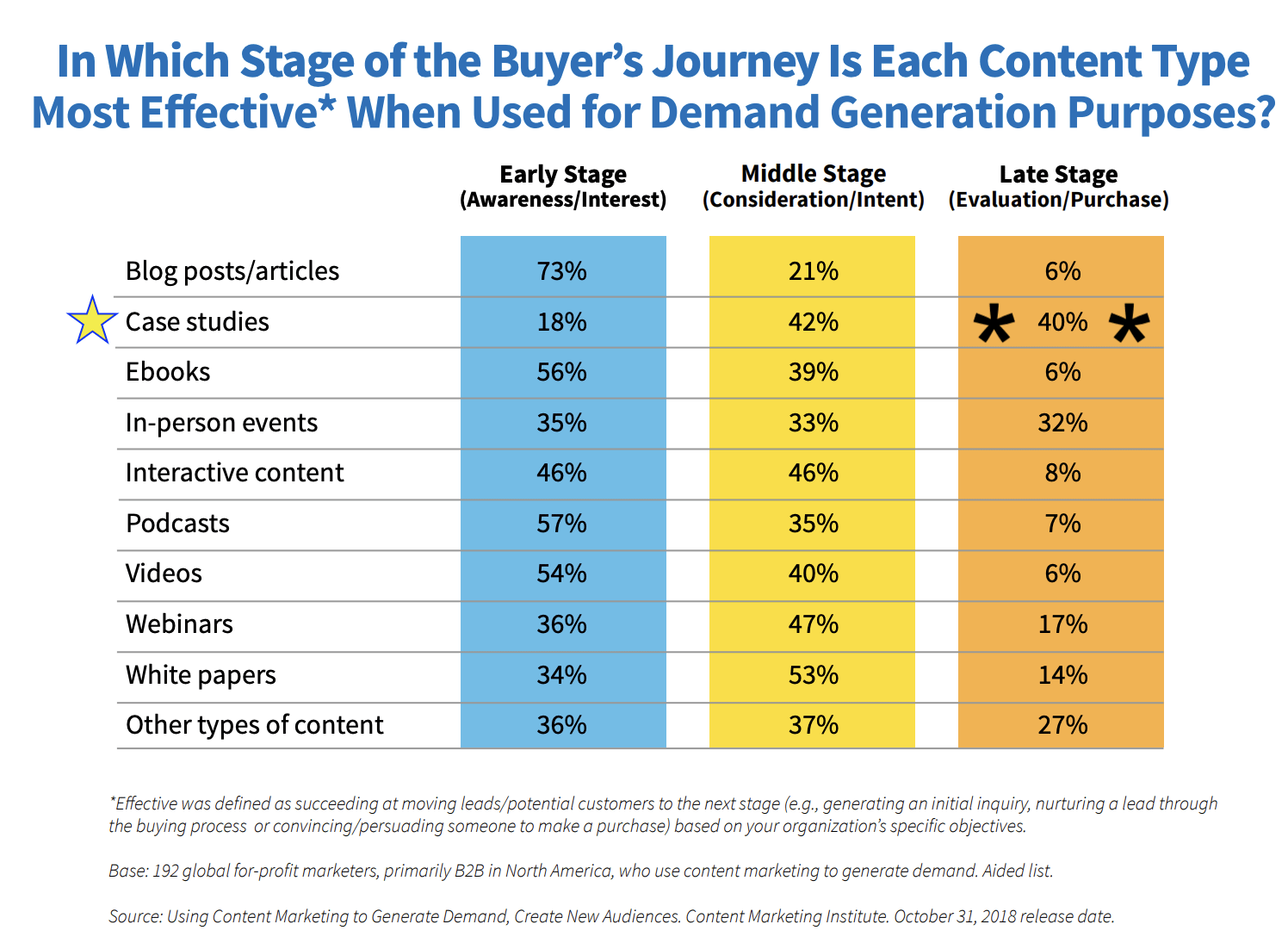
In 2022, 39% of B2B marketers said customer case studies are still the most effective for demand generation.
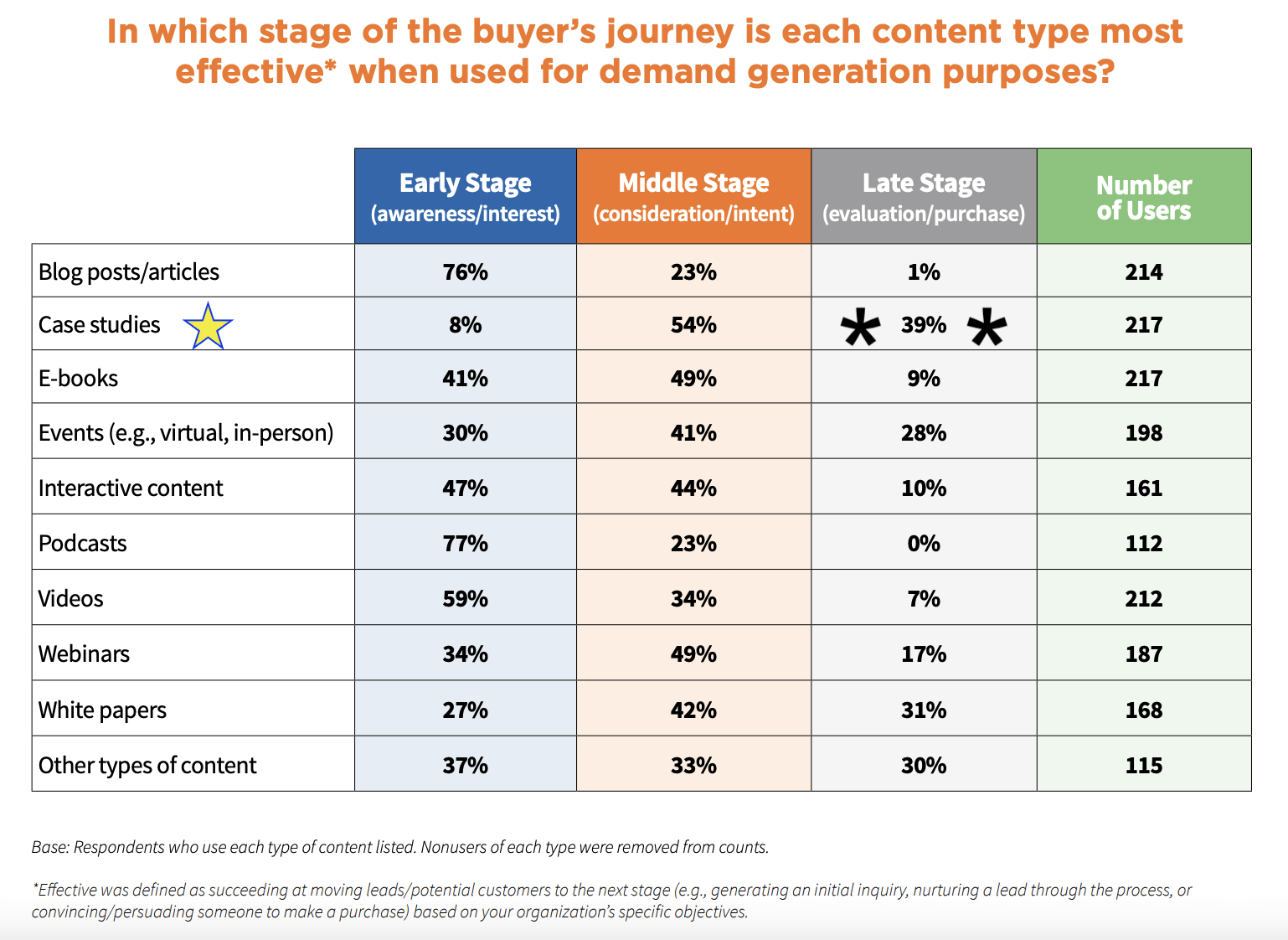
Clearly, how B2B buyers choose to evaluate your product has changed by only 1% in four years.
So whether you are a founder or marketer, you need case studies in your marketing mix.
Besides showing the value of your product in the words of your customers, case studies back bold claims you make about your product. Rooted in cold, hard facts, B2B case studies are a must-have for eliminating all traces of buyer objection.
But how do you create an excellent one that drives revenue?
That’s what we’ll be unpacking in this post.
I’ll show you my process for creating a traditional B2B case study, which have led to feedback like this:
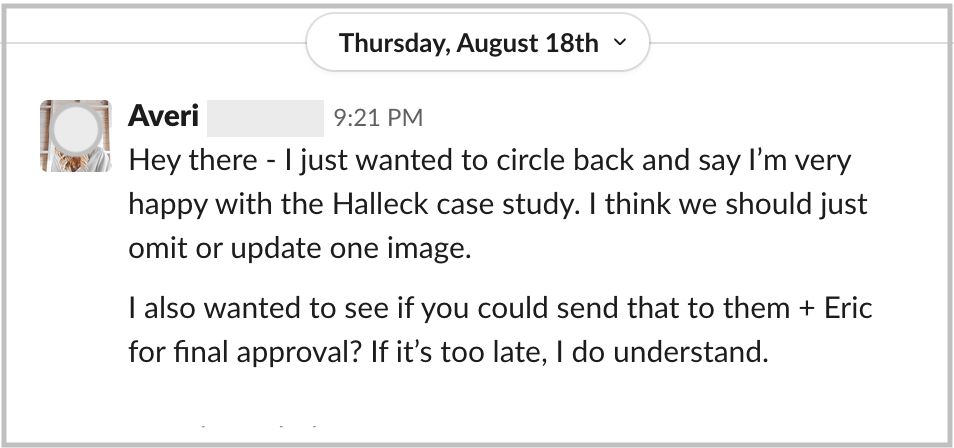
In this post, you’ll learn:
- Why you should care about writing B2B case studies
- B2B case study pre-work
- Why it’s best to conduct video interviews
- How to write an interesting B2B case study
Why Care About Writing B2B Case Studies?
1. Create content your competitors can’t copy
It doesn’t take long for your competitors to rip off your assets like blog posts. Worst-case scenario, they’ll do it once your content hits page 1 of the SERP.
Competitors can also steal your product design, sections of your website copy, and duplicate most things you do.
What they can’t steal? Your case studies.
Case studies are unique content marketing resources that spotlight the experiences of your customers.
Since your customers control the story, every case study will be different and no competitor will dare copy the words of your customers.
2. Add credibility to your top of the funnel (TOFU) content
The timeline for turning prospects into customers should be short. Traditionally, some content marketing funnels look like this:
- 👊 Prospects read your TOFU blog post.
- 📥 Prospects enter your email list.
- 💻 Prospects read your case studies.
- 🔥 You do retargeting with ads.
- 💵 You win the sale.
You can shorten this process by including case studies in your TOFU content. This will add credibility to your content, instantly prove the value of your product, and you could win the sale faster.
As Lizzie Davey explains, “Case studies give your prospects something to visualize.”
A really simple way to add credibility to your posts? Case studies! 🙌
— Lizzie Davey (@lizziedavey) January 24, 2022
Show how you've done something in the past. Show how someone else has done something in the past. Just show whatever it is you're writing about in action! Give people something to visualise.
“People don’t trust anyone or anything anymore. We don’t trust our institutions, we don’t trust our companies, we don’t trust our social networks. There’s this crisis of trust going on,” says Brian Halligan, CEO of HubSpot.
Trust is scarce today because several companies have burned many customers in the past. This is where case studies shine by allaying your prospects’ fears through the relatable evidence from your customers.
As Sam Brenner, Senior Product Marketer at Close notes:
“Case studies show your prospects how them + your product = real success.”
When you create case studies, you also arm your salespeople with an asset for demolishing buyer objections.
This is how Jordan Ross puts it:
Have case studies and stats ready for your sales team
— Jordan Ross (@jordan_ross_8F) August 23, 2022
Send them at least one case study and story a week for
1- social proof for THEIR confidence
2- ammo for the sales call
B2B Case Study Pre-work
Before writing your case study, there are some steps to take.
You need to find the right customers for your case study, contact them, prepare interview questions, interview the customer, and transcribe the interview.
Let’s go over each step.
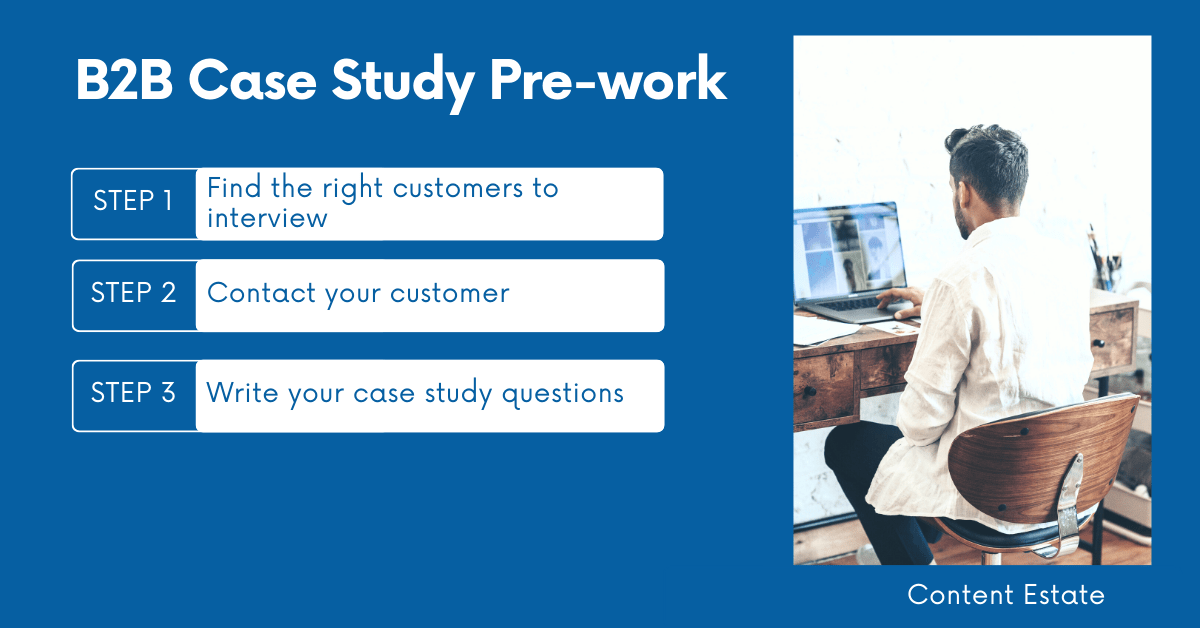
Step 1: Find the right customers to interview
Once you have the right customers for your case study, you’ll get a brilliant case study. It’s that simple.
To find the right customers for your case study, use these tips.
Recency of customer story
It sounds logical to feature a customer who has used your product for several years. Undoubtedly, this will increase the credibility of your story.
But what if this customer can’t remember why they chose your product over others?
This piece of information may be crucial to your story.
So when deciding on customers to interview, find those who started using your products in recent years. This ensures they can recollect their challenges with previous solutions before they found yours.
Positive customer experience
Customers who you choose to feature in your case study should be loyal fans of your brand.
They should have experienced impressive results while using your product or have a decent ROI.
Align with one of your core ICPs
Prospects want to see how your product solved the challenges of those who look like them. A founder’s pain points differ from those of a content manager. Same goes for two different companies earning $5 million and $500 million in ARR.
If you want to attract founders with your case study, feature the stories of founders who overcame their challenges by using your product.
Ashley Howe, content marketer at Tapfiliate, says:
“Marketers should tailor each case study to a specific customer. An ecommerce customer will differ from a SaaS customer, so they will look for case studies about their company type.”
Step 2: Contact your customer
How you choose to contact your customer is entirely up to you.
To get your customer’s nod for your case study, contact them where they are most active. This may be Twitter, LinkedIn, or Slack. But to keep your request formal, you’ll want to email customers you choose to feature.
Need an email template to contact customers for your case study? I got you. Just ensure you tweak the template so it aligns with your relationship with the customer.
Here’s my email template, which you can remix:
Hi [customer name],
I am (your name), (your role) at (your company). I’m thrilled that you’ve had outstanding successes using our product. Our team deeply appreciates the positive feedback we’ve been getting. We’d like to amplify your feedback by featuring your story in our case study. Agreeing to work with us would put a big smile on our faces. That’s why we’ll send a backlink to your site to say a huge thanks to you.
Our case study writing process is pretty simple. First, we’d do one 30 to 45 minute video interview with you. Next, we will write the case study. Finally, we will send you the final draft for your review.
After you give the case study a thumbs up, we’ll publish it on our website, distribute it on our social accounts, and use it in our marketing materials.
If you’re open to working with us on this case study, please schedule a video interview with us or reply to this email with your calendar link and we will be more than happy to schedule a time that works for you.
We can’t wait to share your story.
Best.
Your Email Signature.
Step 3: Write your case study questions
Brilliant case study questions will uncover your customer’s situation before, during, and after using your product.
A simple way to think of this is to ask questions about:
- Your customers’ challenges
- Unfit solutions they tried
- How your product came to the rescue
- Results from using your product
When your questions fit the above criteria, you’ll unlock powerful stories, quotes, and stats. This will help you create an interesting case study for your ICP.
Here are some typical questions I ask when interviewing customers:
Conducting the Video Interview
You can do customer interviews using email, phone, in-person, or video. However, I prefer doing video interviews. Here’s why:
I can probe deeper
Video interviews allow me to unlock more insights from a customer. For instance, I once wrote two case studies for an accounting project management software. During one of the customer interviews, I asked, “What were your top challenges before using my client’s product?”
The customer responded, mentioning a previous product that wasn’t a fit.
I asked further, “Did you use any other project management software besides the software you mentioned?” The customer responded. I wanted more insights, so I asked, “Did you use spreadsheets as well?”
Asking these followup questions would be impossible if I used email.
Plus, there’ll be many back and forth when asking the customer to clarify some details. This can wean off the customer’s appetite to continue with the case study. You don’t want that to happen.
Get insights from different people at once
It’s not uncommon for two people from the same company to show up for an interview. I’ve had this experience where two people provided useful insights that I used as quotes. The chance of having two persons respond to an email, phone, and in-person interview is slim.
Ease of reviewing customer responses
Doing video interviews allow you to review customer responses easily.
Now, if you conducting customer interviews using video, note these:
- Do the interview in a quiet place.
- Use a stable internet connection to prevent loss of valuable information and asking customers to repeat themselves.
- Request the customer’s permission to record the interview.
- Use a real-time transcription software like Otter AI to take meeting notes.
- Don’t interrupt the customer when they are speaking.
- Stick to time. 30 minutes should be 30 minutes.
How to Write an Interesting B2B Case Study
Now that you’ve gathered all the information you need from your customer, the next step is to write your case study. Here are the steps that’ll help you go from customer interview to your first draft:
1. Write a memorable headline
I can wager that you’ve watched many movies.
How many titles do you remember?
If you’re like me, the answer is, “Few.” You only remember those that are memorable.
It’s the same with case studies. Case study headlines need to be memorable and show an obvious benefit for prospects.
Traditionally, your headlines can include:
- Your company name (not compulsory)
- An outstanding result
- Name of your customer
- Specific figures like number, percentages, or ROI
Take this case study headline in Brandfolder’s B2B case study example, for instance. It shows an outstanding result, the customer’s name, and a specific number of saved hours.
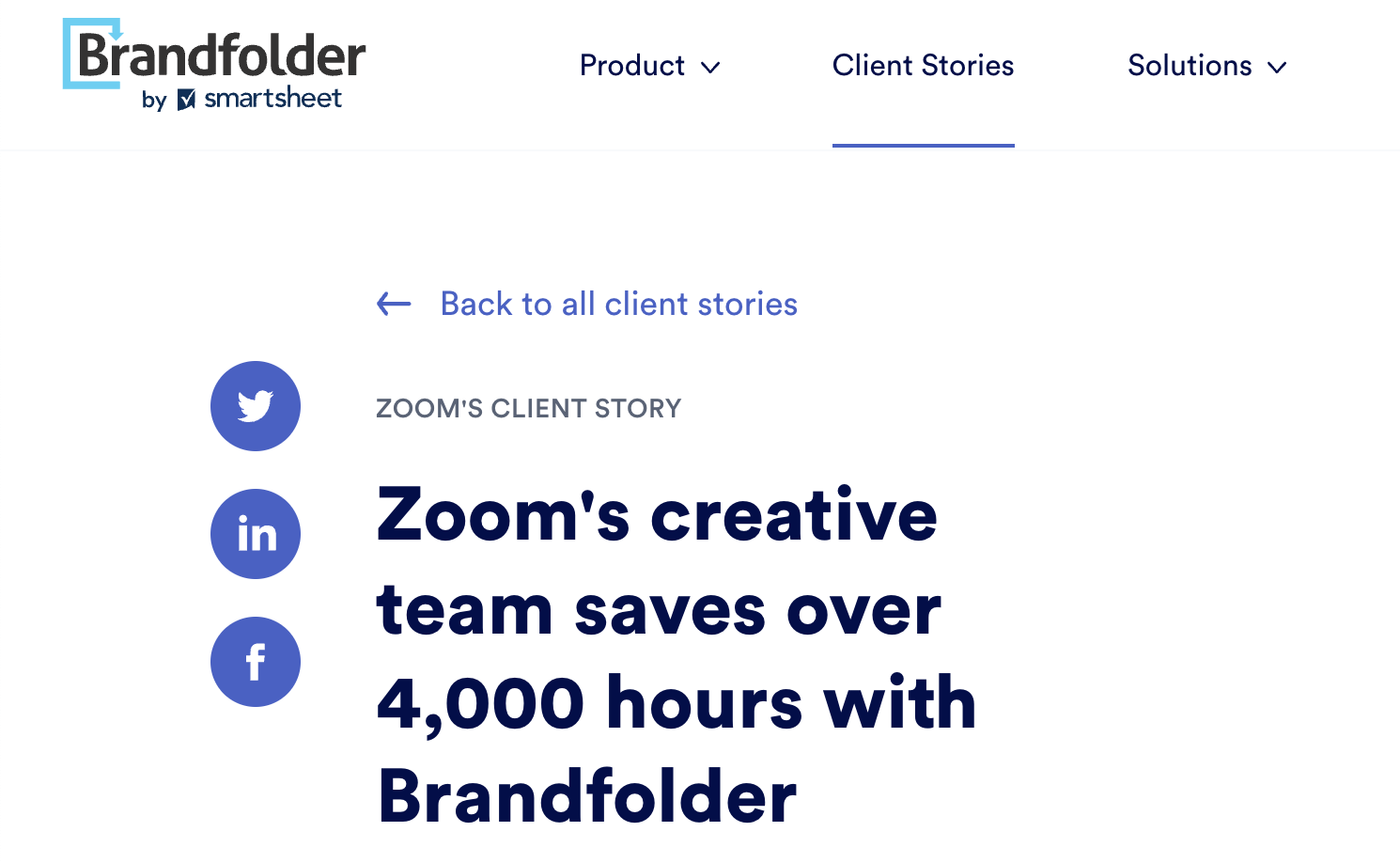
Here’s another example from ClickCease, a click fraud and ad fraud prevention platform.
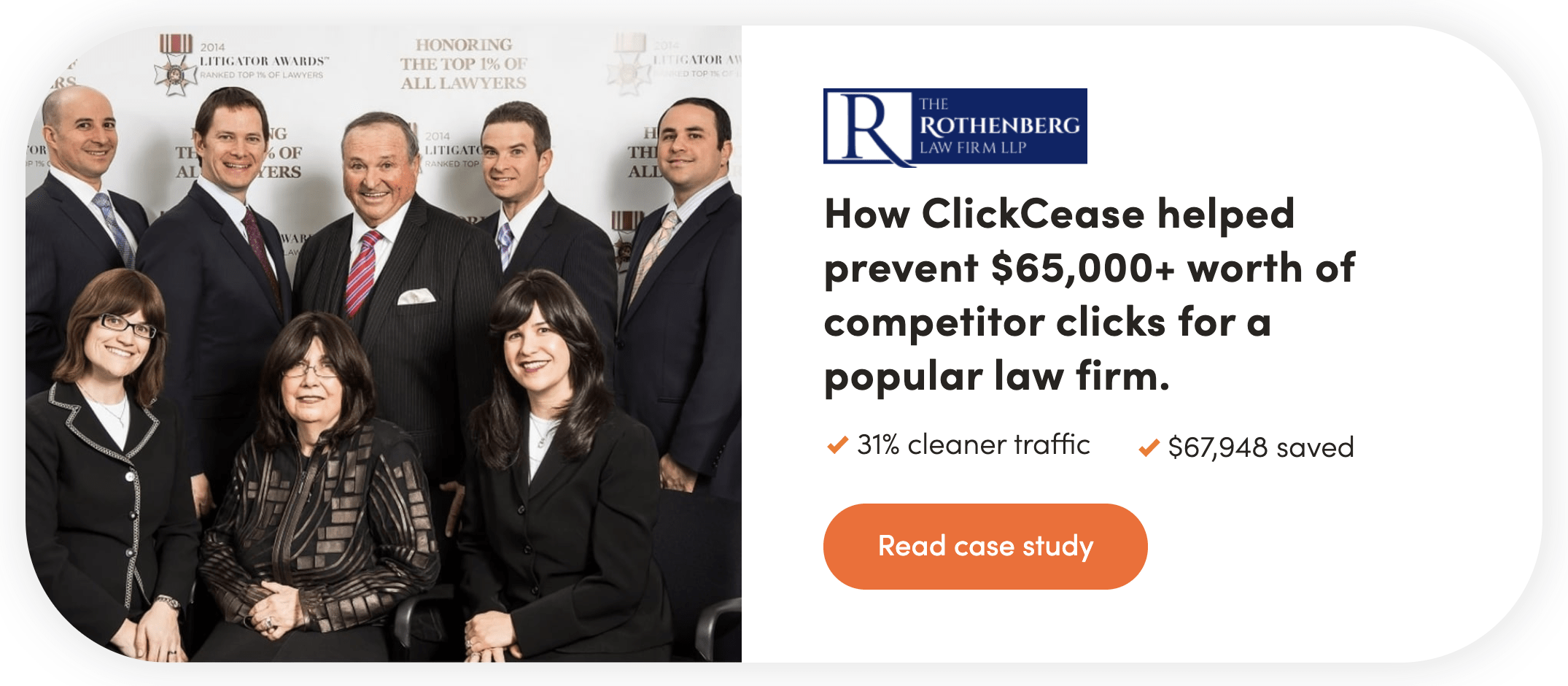
2. Introduce your customer
Use the first two or three sentences of your case study to summarize what your customer does.
Discuss the mission of your customer, how your customer achieves its mission, and the effect of achieving the mission.
You can also briefly state some information about your customer. This may include the year of founding the company, industry, number of employees, results achieved, and favorite features, etc.
See how the FreeAgent CRM team puts this in action:
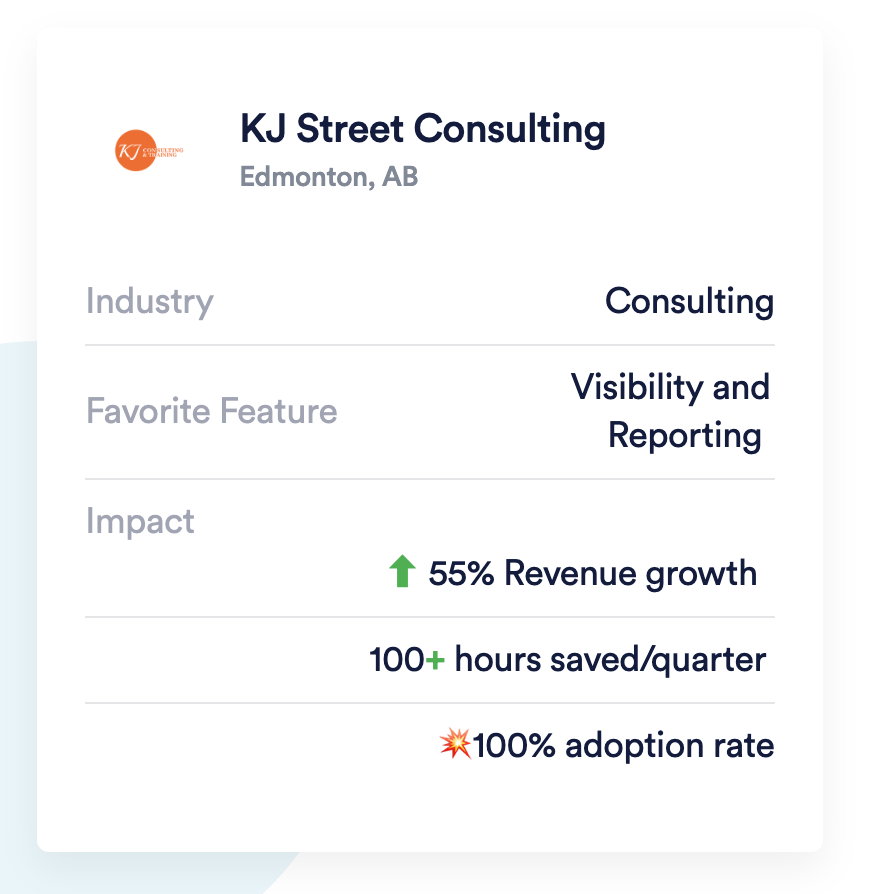
3. Discuss your customer’s challenges
There are no hard and fast rules here. You can choose to tell a detailed story or highlight your customer’s challenges in a few sentences.
For instance, this ClickUp case study highlights the customer’s challenge in two sentences.
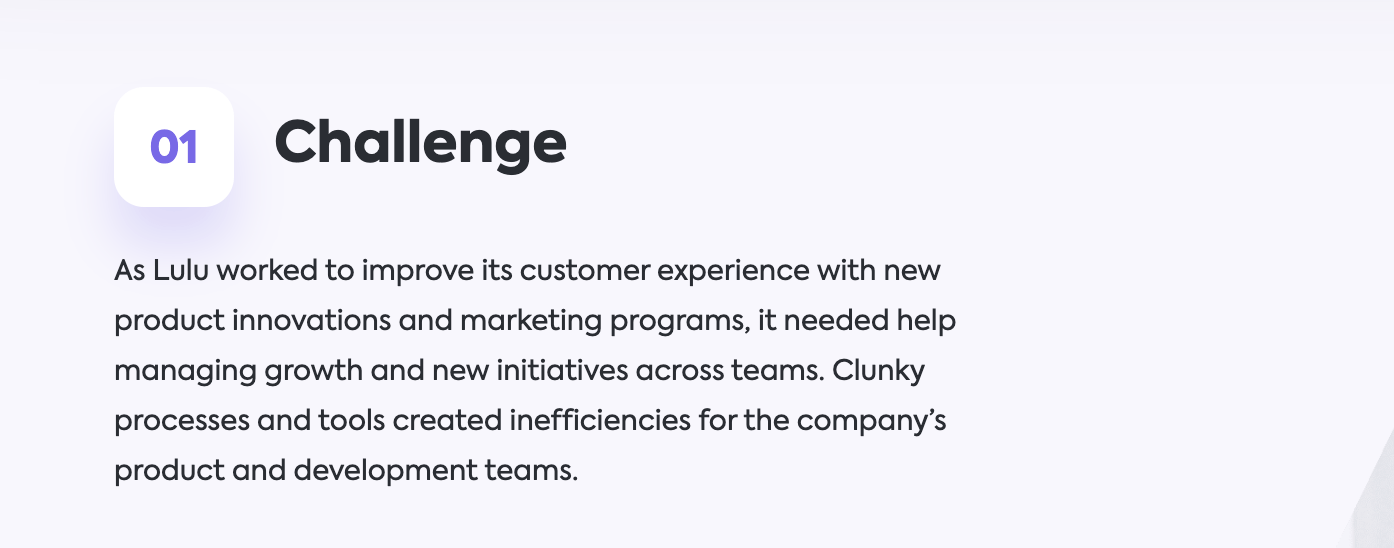
Whereas, the case study by ClickCease, which I mentioned previously, tells a detailed story.
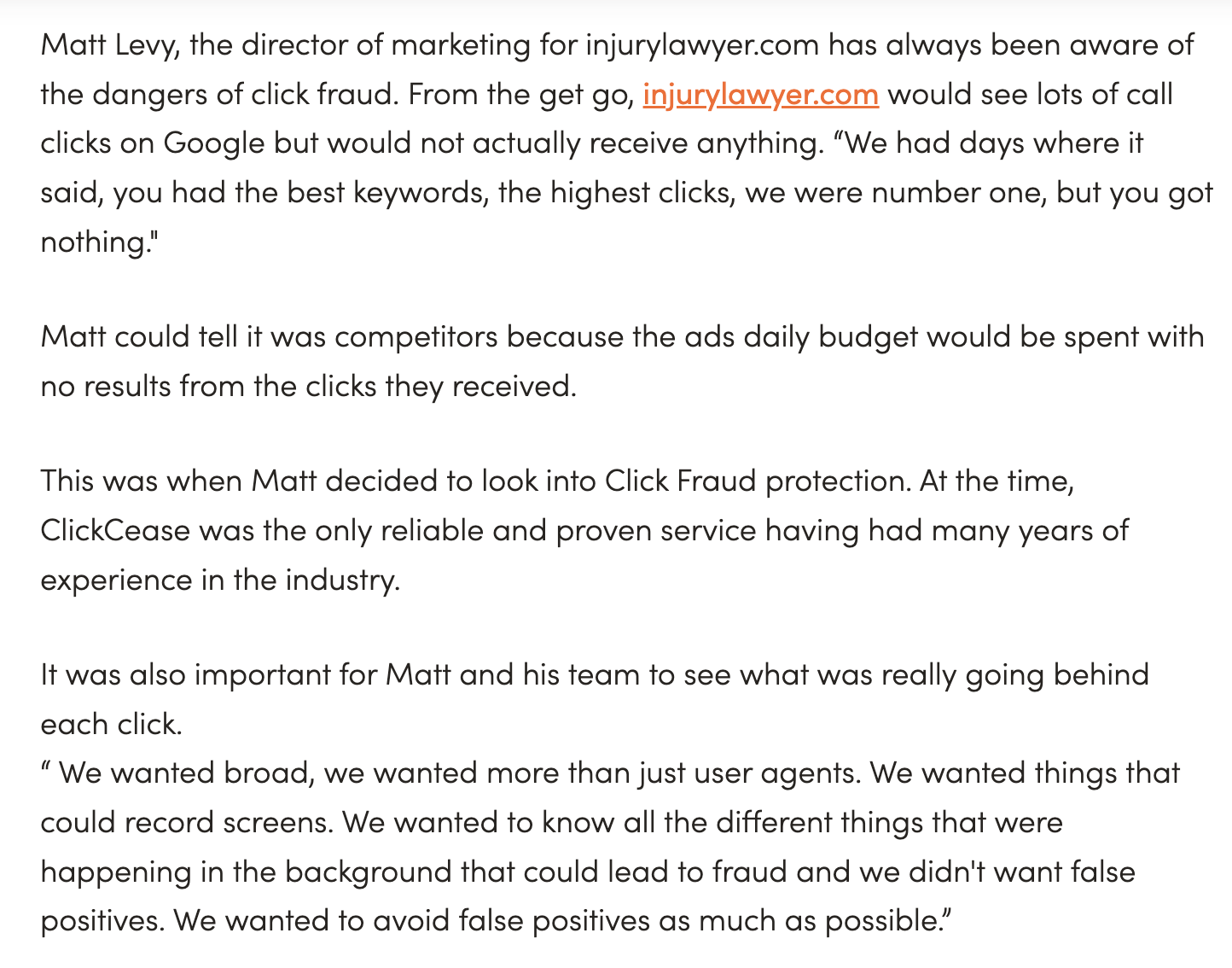
What’s important isn’t the amount of white space you cover when discussing your customer’s challenges. It’s your ability to convey the challenges adequately and paint a picture of how they negatively affected your customer’s processes, growth, revenue, etc.
4. Solutions
Having read your case study to this point, your prospects can see their own challenges staring them in the face.

Source: Giphy (https://tinyurl.com/ucc343ew)
Use your solution section to show how your product tackled the customer’s challenge head-on. Discuss why your customer ditched the competition and mention your product features, which the customer frequently uses.
Customer quotes should also take center stage here.
And where relevant, include screenshots of your product in action. This will make your case study interesting and it’ll also improve readability.
5. Results
Your case study results section should discuss percentages, year-on-year increases, number of new clients for your customer, number of increased leads, etc.
This is where you show off what you can do for prospective customers who are reading the case study.
6. Call to Action (CTA)
Prospects should have a reason to reach out to you. Avoid using boring CTAs like “contact us” or “schedule a meeting.”
Give them a “why.”
A simple way I do this is to use CTAs that relate to my headlines.
For instance, after writing a case study with this headline, “How [customer name] Improves Capacity Management with [my client],” my CTA was this:
“Want to Better Manage Your Firm’s Capacity and Hit Client Deadlines?”
Try [my client’s product]
The Cost of Outsourcing a B2B Case study
Marketers who have many tasks on their plate choose to outsource the entire case study creation process. This covers communication with your customer, interview, and writing the case study.
Typical rate for outsourcing all of these is $1,000 to $2,000.
You can also expect to pay up to $4,000 if your project is complex or if you need a video case study.
If you’re interested in a traditional case study, which I’ve discussed in this post, then check out my case study packages. You’ll love the result and will probably return for more case studies to power your revenue goals.
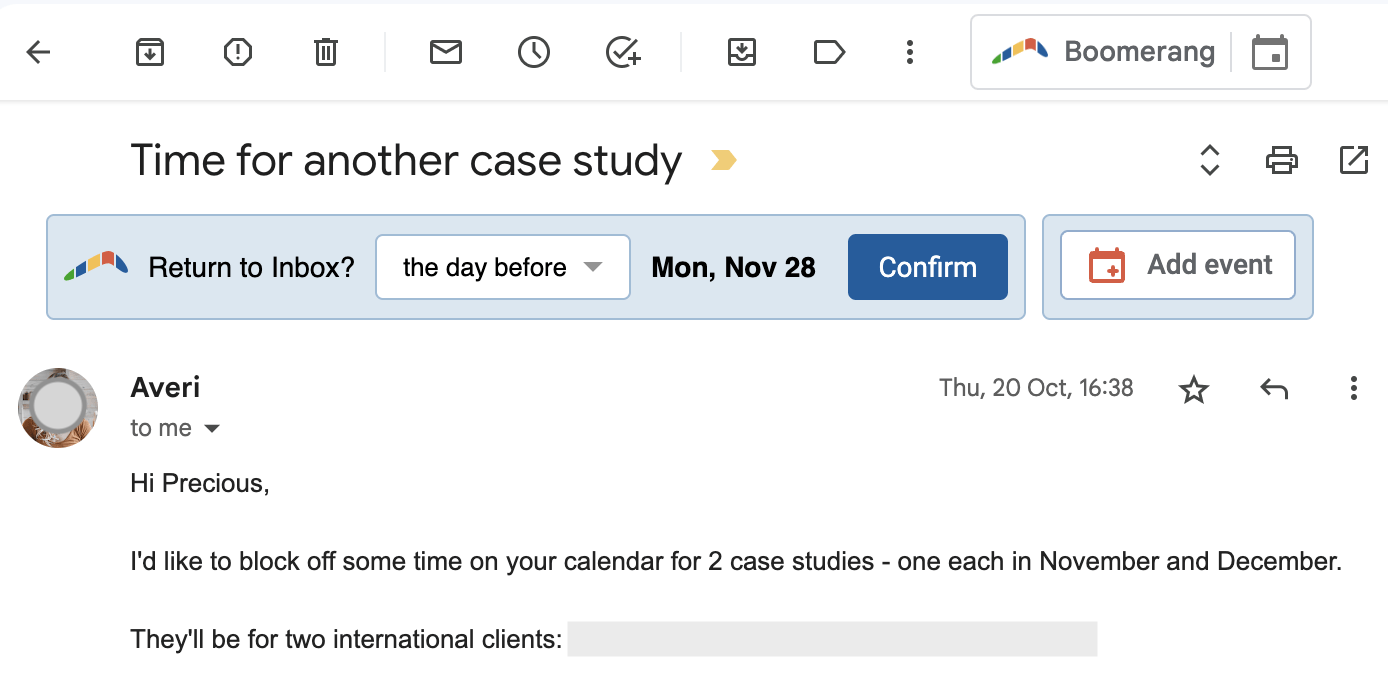
Got questions or contributions to this topic, drop a comment below or contact me on LinkedIn. I’d love to hear from you.
Cheers.

Precious Oboidhe is a B2B SaaS content strategist and writer for hire. If you need help with strategizing and creating assets for the different stages of your content marketing funnel, get in touch.

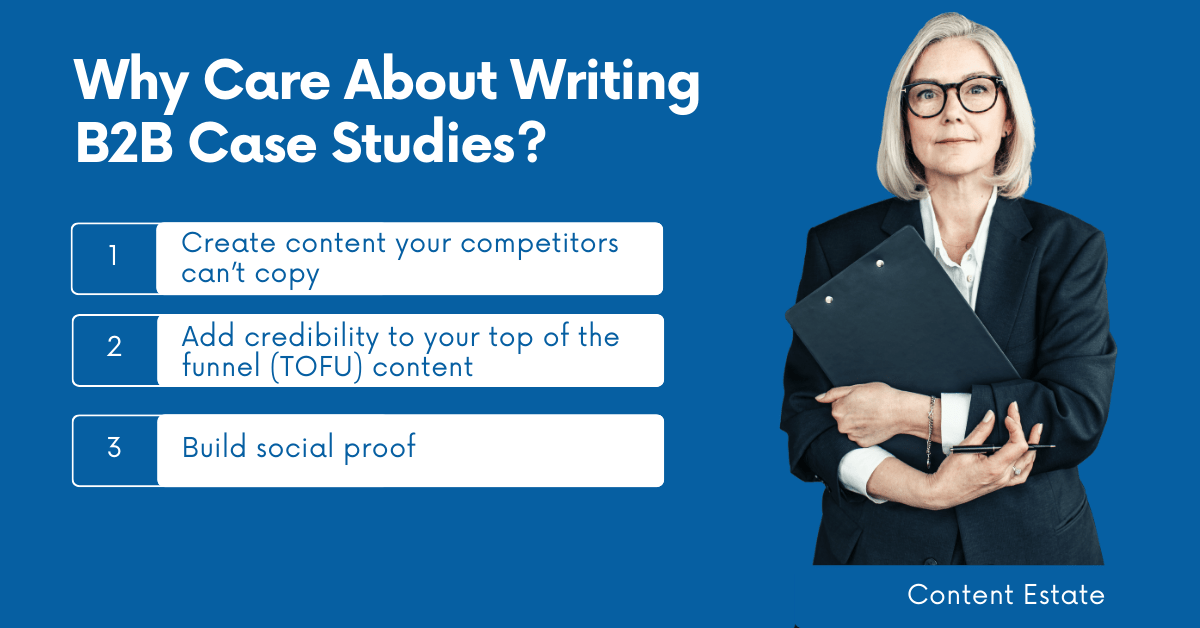
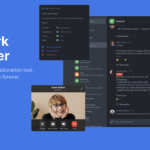

As a content writer, I have been contemplating creating a case study, because those who filled the role before me didn’t see the need to. But now, I am sure it is needed.
Thank you for this insight-packed blog post. You are a jewel, Precious.
You’re welcome.